The Gejiu Mines 个旧厂 in Gejiu City 个旧市
The Gejiu Mines are primarily known as tin mines because this metal was exclusively exploited from the early 1900s through much of the 20th century. In a period, when mining across the Southwest of China had dwindled to a local village industry, the Gejiu Mines still employed some 30,000 miners.
The archaeological record documents the exploitation of copper since the Han period. Silver was probably the main objective of mining from the Yuan period, and is attested in the Ming. The scale of the exploitations, and the distributions of mines that worked copper, silver and tin ores is uncertain.
Fieldwork by Yang Yuda and Nanny Kim, with Ma Qi 马骑, Zhang Kefeng 张轲风, Nie Xun 聂迅, Xia Zijin 夏自金, Jiang Jianguo 姜建国, 2015.11.6.-7., supported by the Yunnan Tin Corporation and the Gejiu City government
2015.11.6.
Gejiu: The first day is spent with two museums that are interesting for Han period archaeological finds, and sites of the Republican period. History at Gejiu is mostly considered in terms of tin and the miseries and glory associated with it in the Republican period.
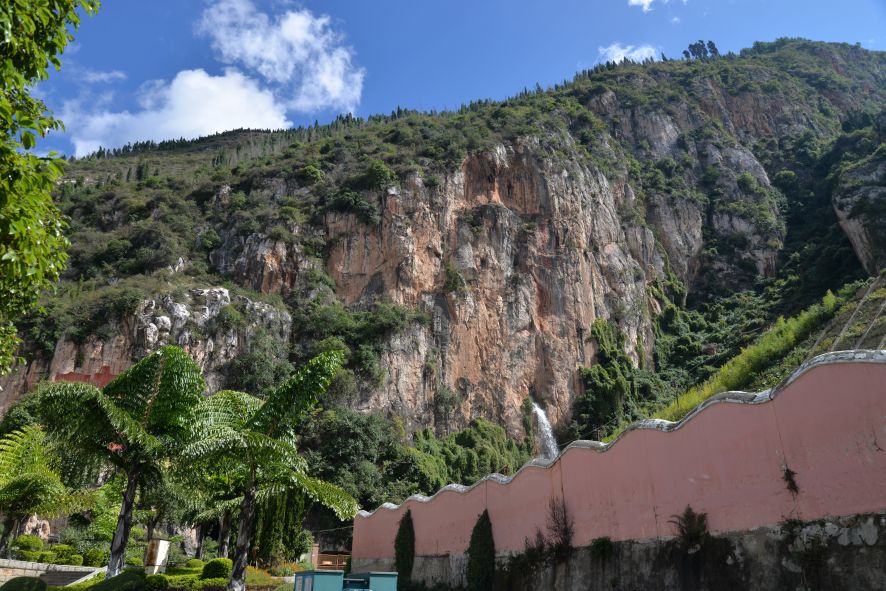
The limestone cliff that deliminates Gejiu city to the South and forms the foot of the mountain of Laochang. Photo by Nie Xun.
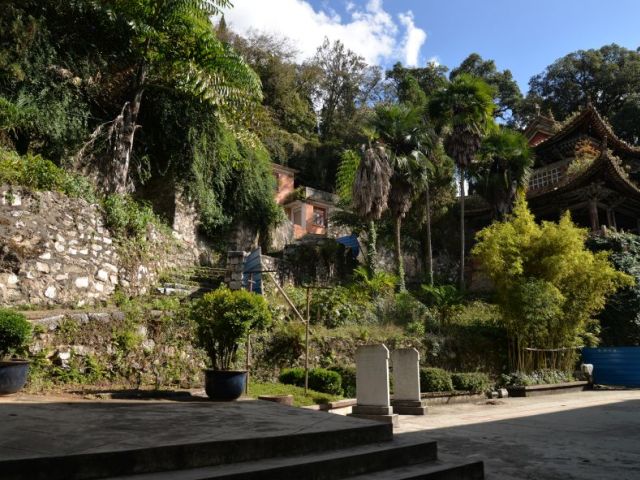
View across Gejiu City facing NW. Photo by Nie Xun.
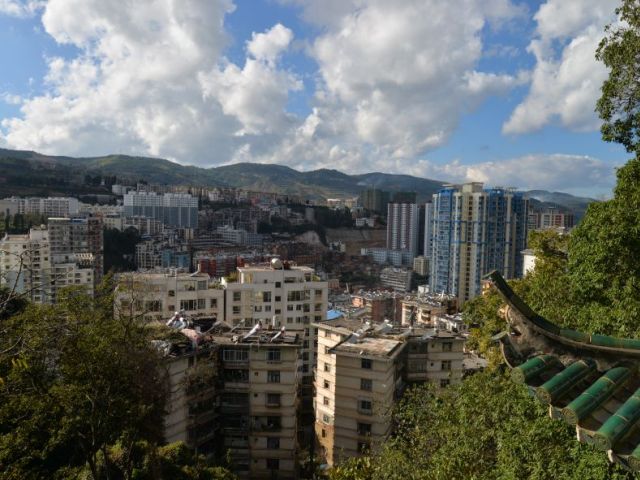
A pavilion at a temple above the old city: The only old structure in that dates to the Qing period. Photo by Nie Xun.
2015.11.7.
Fieldwork at Laochang 老厂 and Kafang 卡房, supported by Mr. Tang 小唐 of the city government and director Liu 刘, an engineer who has been director of the Xinshan Mines at Kafang for 25 years.
First stop at Laochang 老厂 (Old Mine) town, at about 2300 m. The local company director first shows us two mining towers, with cable elevators that descend to a depth of 260 m. They were built in 1939 (?) and used until ca. 1990, now still serving as ventilation shafts. Of historic mining, he knew the Damingcao 大明槽 (Great open ditch) at the southern end of the modern town. This is a trench filled with dolomite spikes that appear to have been eroded underground, about 150 m wide and of unclear length because of ongoing modern open pit mining on the slope to the west, while the lower end is defined by narrow point in the valley. The existing length is between 400 and 500 m, the depth is 30-40 m from the present brink at the town level. The ore mined here was soft or mudlike, presumably washed out oxidized tin ore. The two company managers know about sites of old mines around Laochang, believe nothing is left by now because of extensive open pit mining, and because remaining entrances would were blown up to stop illegal small time mining. The state of the tracks was another concern.
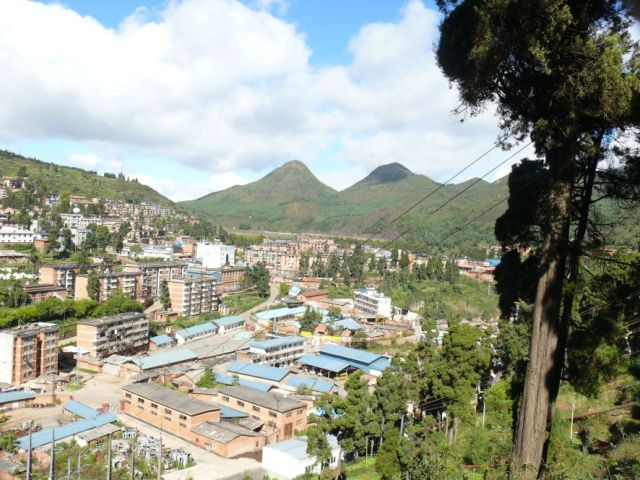
View across Laochang town
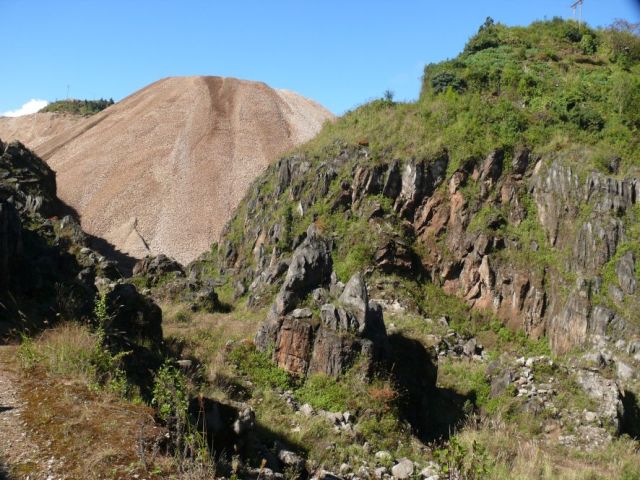
The Laomingcao, facing south upon a huge dump from open pit mining
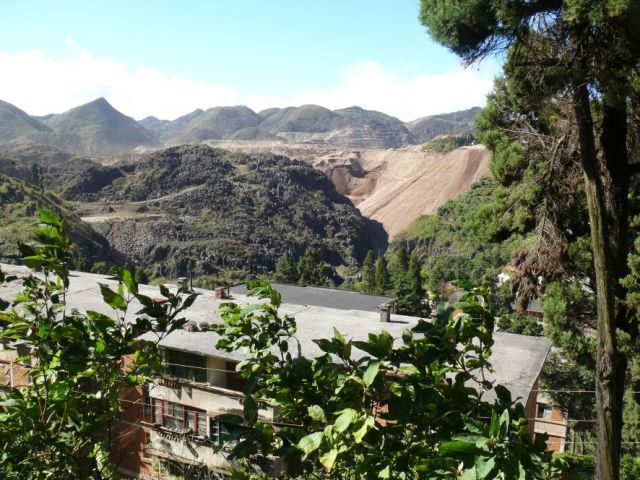
View on the Laomingcao from a hillside above the town
They take us to Langshedong 狼蛇硐 (Wolf and Snake Mine), a site near the main road in a steep crescent slope a little way down descent towards Gejiu. A little way below is the village Mudengdong 木登硐 (Mudeng Mine), a village that has been moved away and whose inhabitants are mostly involved in small-time mining of iron ore. Driving to the site we pass the Haozi Temple 耗子庙, near the top of the main ascent. It used to be a major temple but the present structures are recent.
At Langshedong we park at a small mine. The boss, who is from Mudengdong, happened to be there. He evidently was very knowledgeable. He told us that old mine entrances start from about 20 m above the place where we stand and used to be spread all up the slope, almost to the top. Three of us climb to the top without finding any mines, partly due to thick vegetation, partly to the shortage of time. According to all informants Langshedong has always been a tin mine.
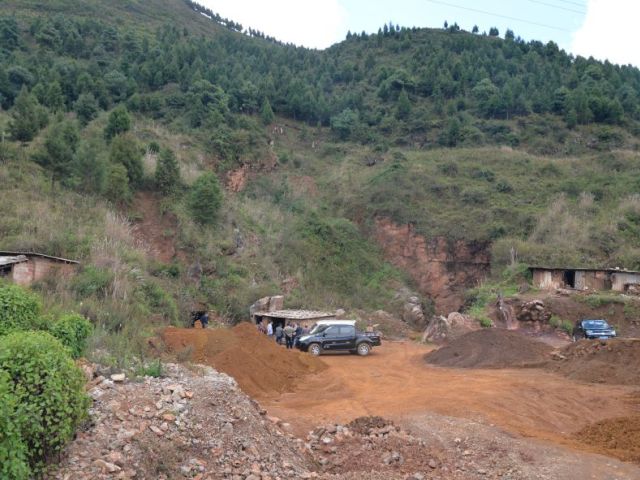
A small, operating iron mine at Langshedong. Photo by Nie Xun.
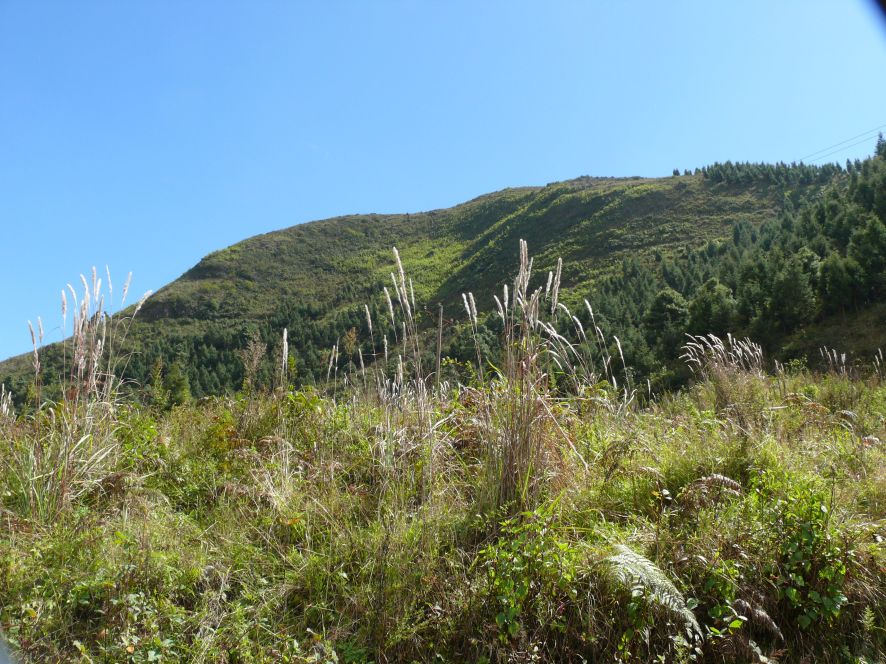
The forested hillside of Langshedong
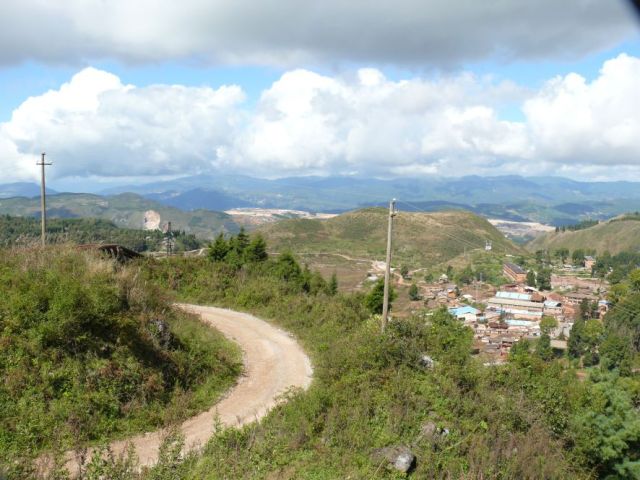
View towards Kafang from the hillside at Langshedong
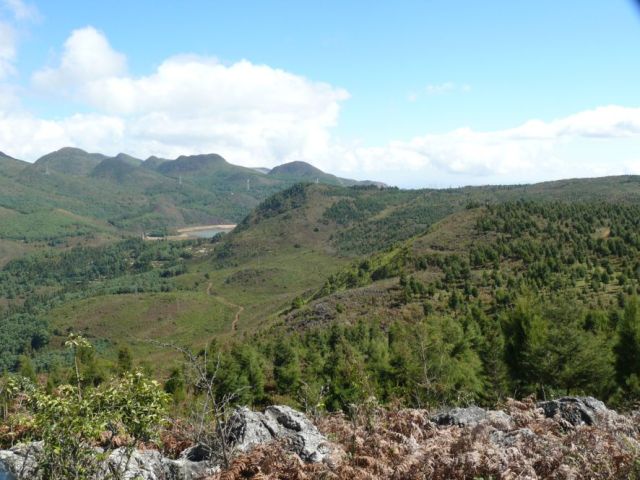
View towards Laochang from the top of the hill of Langshedong
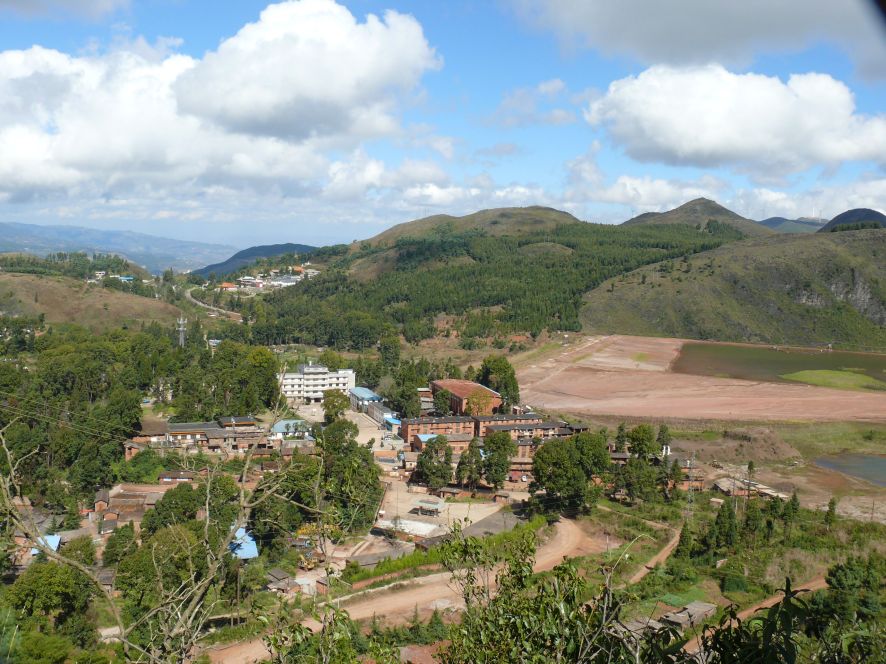
View towards Gejiu (no visible in its deep valley) from the top of the hill of Langshedong.
Director Liu decides to take us to Kafang but not up to the mines because of the road condition. From the company headquarters at Kafang, he points out the old mining areas on the Xinshan (New Mountain), which is separated from the Laochang mountain to the north by a narrow valley, while also distinct from the mountains that descend towards the Yuanjiang (Honghe) and carry little ore. He also tells us that the mountain that now stands about 600 m above Tangfang, with a cone left, used to have another cone that was 100 m higher, but has gone as a result of recent open pit mining. Old mining sites extend from Heimajing 黑马井 to Longshujiao 龙树脚, and include a site known as Jinchaipo 金钗坡 not far from Longshujiao, all more or less on the edge of the relatively flat mountain top. The majority of Han perios graves were found near Heimajing, probably reflecting that copper mining existed here around 2000 years ago. Jinchaipo is the name of a very important copper mine in the 18th to early 19th century. For reasons of time and safety, we could not walk up to look for remains.
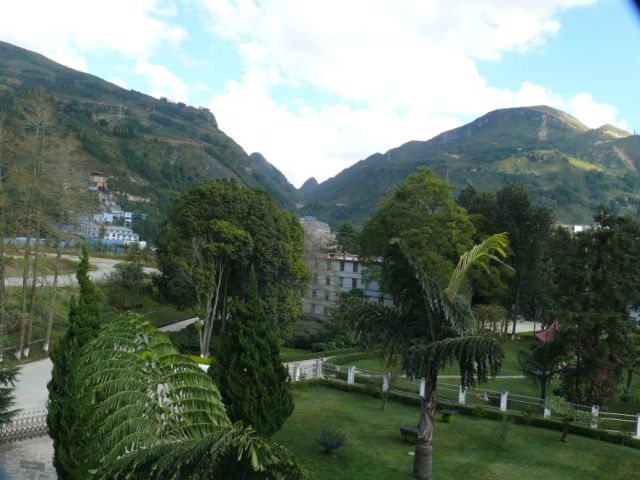
The gap that separates the Laochang mountain to the north from the Xinshan to the south, seen from Kafang.
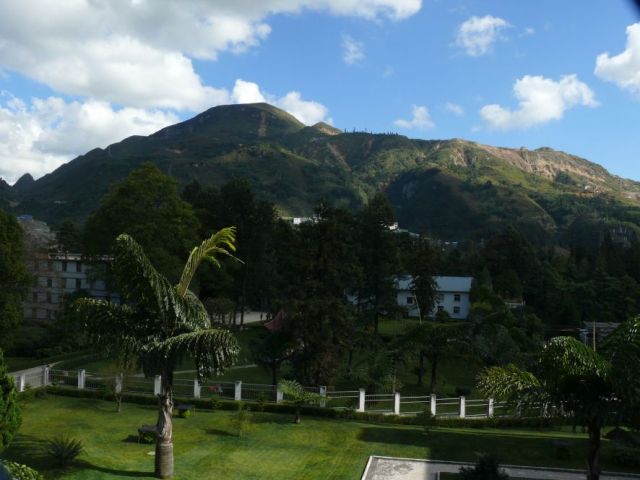
The Xinshan seen from Kafang. The mountain profile consists of a knob at the northern end (left in the photo) with an extensive flattened part following, the cone removed by open pit mining
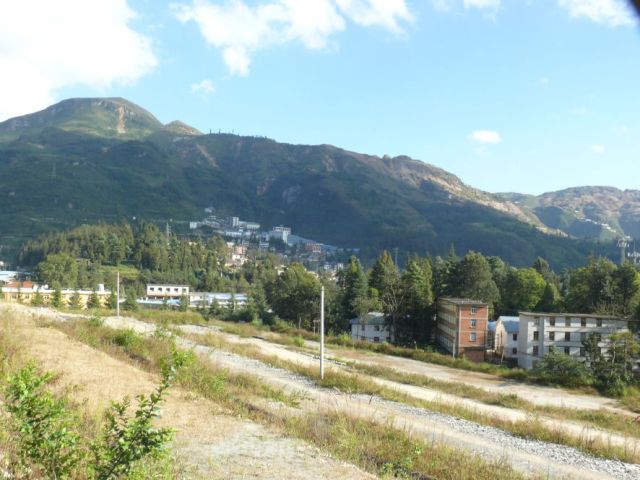
The Xinshan and its southward extension to Heimajing and Jinchai. Photo by Nie Xun.
Director Liu was definite that Laochang has always been worked primarily for tin, while Xinshan used to be worked worked for copper, silver, and tin. Lead also found in places, but he thinks that lead mining is recent and was never carried on a larger scale. Recycled slags according to him present the same picture, but he is not that precise with this information, presumably because re-smelting was finished before his time.
Results: Due to the intensive industrial exploitation, actual fieldwork findings are extremely limited at Gejiu. The collected information and preliminary impression of the geography however, some aspects of historical mining can be reconstructed. The earliest exploitation clearly was for copper and is safely dated to the Han period. The later exploitation, that began in the Yuan period, was for silver and initially probably in fact started in Gejiu along the limestone walls in this valley. Exploitation gradually expanded to the Laochang and Xinshan areas, focussing on silver to about 1700. The Jinchai copper mine became important in the 18th century, alongside silver mines that might still have centered in the Laoshan area. Exploitation may have followed silver. More probably, it developed with the market demand for tinfoil, in fact at Laomingcao, a site that Leclère still recorded as the main tin mining site in 1901. Underground mining that used former silver mines to access tin ores in deeper layers appear as a phenomenon of the 20th century.

